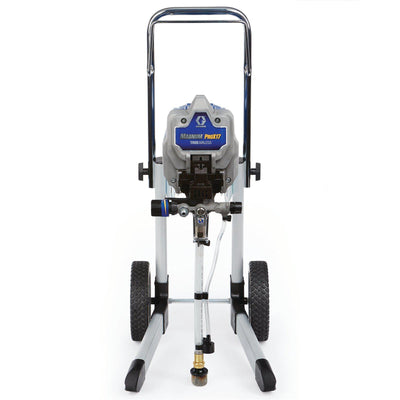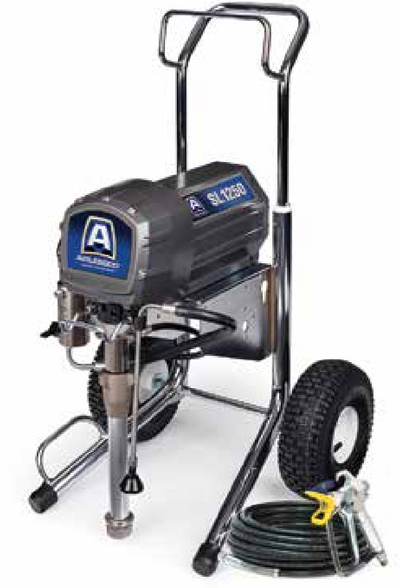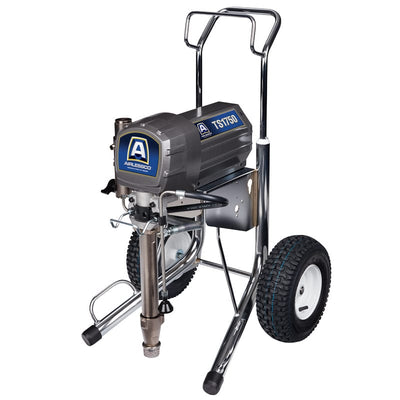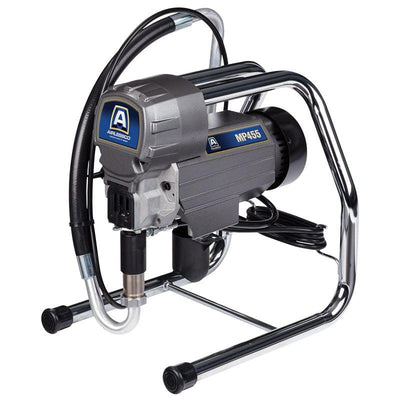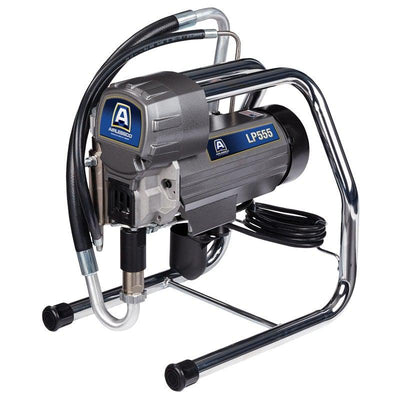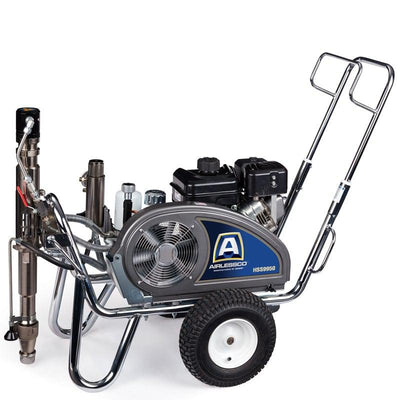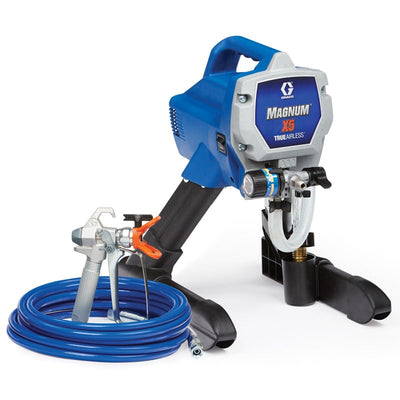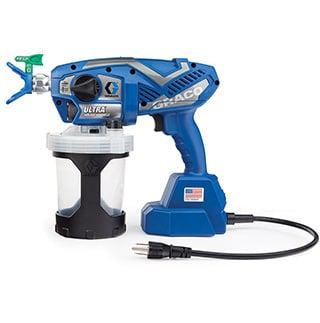Airless Piston Pumps VS Diaphragm Pumps
When it comes to moving fluid for a paint or related application you will often be evaluating between an airless piston driven pump or a diaphragm pump. To ensure you select the right type of pump for your application it is important to have a thorough understanding of each type of pump and there applications.
Airless Piston Pumps
The term airless can often confuse people because it seems like the pump wouldn’t use any air. However, airless is in reference to the fact that an airless pump is typically used with a spray gun that relies on fluid pressure alone against a tip to create a fan. This is unlike the common alternative to airless pumps which are air spray guns which relies on air being introduced into the fluid to create a fan pattern. Airless pumps do use air and often times significant volumes of air depending on the pump size.
Airless Pump Pros
Airless pumps provide significant pressure to fluid which when fed to an airless spray gun will allow a pattern to be created. This pattern allows for fast application of a coating and is one of the fastest ways to apply coating when compared to air assist airless and air spray guns. Additionally, the high pressure of the pump will allow coating or material to be delivered vertically well or over larger horizontal distance while a common diaphragm pump will often be limited in the distance that the material can be supplied over. An airless pump also comes in electric or gas driven options which make it a good option for job site work.
Airless Cons
The major downside to an airless pump vs a diaphragm pump will be the volume of material that the pump can supply. Common Airless paint sprayers will deliver at most 7 GPM (these are extraordinarily large airless pumps). There are unique airless options that provide material at lower pressure ratios (like 3:1) with higher volumes but can be quite expensive. They are also a bit more expensive to repair as there are potentially more parts that will wear over time.
Common Airless Pump Uses
For spraying a material with an airless or air assist spray gun
For delivery of material at high pressures or long distances
Diaphragm Pumps
Diaphragm pumps rely on air pressing back and forth on two different diaphragms. The pushing back and forth of the diaphragms creates a suction and then a pressurizing of material. The suction action draws material into the pump and the pressurizing action forces material out of the pump.
Diaphragm pump pros
Diaphragm pumps are typically lower priced compared to airless pumps. They are often able to deliver higher volumes of fluid, for example this 1.5” diaphragm pump can deliver up to 106 Gallons Per Minute at maximum (though you will typically not want to run the pump at this rate continuously). They are also a bit more compact than airless piston pumps.
Diaphragm pump cons
The major downside to diaphragm pumps is that they do not provide much pressure. This means they can be limited in their ability to move material over a given distance or up heights. They will also need to have an alternative way to break material apart rather than pressure (like an air spray gun) if you plan on atomizing coating.
Diaphragm pump Uses
- For transferring fluid in an air fed spray gun line
- For use with an air spray gun and large feed source like a 55 Gallon drum
- For transferring large volumes of coating over shorter distances
Ultimately by knowing the differences between diaphragm and airless pumps you can better understand which may be right for your particular application. If you have questions your welcome to contact us.

